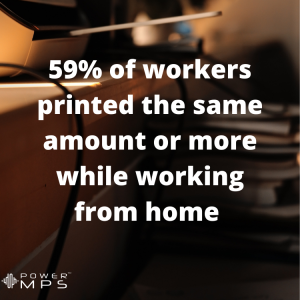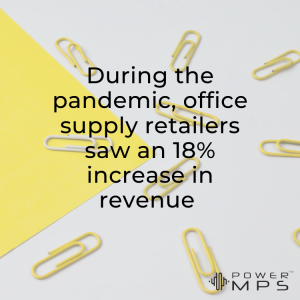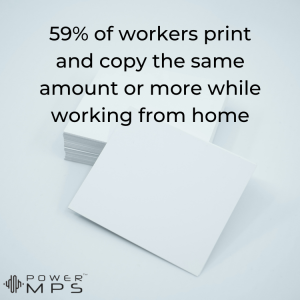Before COVID-19 hit, insufficient capacities had already created a shortage of semiconductors worldwide. But the pandemic response, with government rules and regulations generating widespread lockdowns, forced manufacturers to temporarily cease production.
Once shut-downs began to ease and production started to ramp back up to normal levels, the demand for these tiny microchips had grown beyond what the industry could meet at normal production levels. The issue was compounded by ongoing supply-chain disruptions keeping necessary materials from being delivered to feed production.
Economical Impact of Semiconductor Shortage
It is estimated that the shortage in 2021 cost the USA economy over $240 billion dollars. The $240 billion is up $30 billion from 2020. As the shortage continues, and it continues to be a struggle to keep up with current demand, let alone make up for the past shortages, the total impact to the USA economy may be over $1 trillion by the end of 2024.
The printing industry, though not often mentioned in the news, has been particularly impacted by the semiconductor shortage. And, unfortunately, it does seem that the impact will continue to get worse through 2022 with relief not likely until 2024 or beyond.
How Semiconductors are Used in Printers and Ink Cartridges
Semiconductor chips are a necessity in the production of ink and toner cartridges. These tiny chips communicate ink and toner levels to the printer’s monitoring software and provide notifications for low levels, blockages, and other information. In addition, these tiny machines have been designed for the highest accuracy, capable of calculating delivery down to the number of droplets a cartridge can release.
But semiconductors are not only used in a printer’s ink and toner cartridges. Like most electronics, they are used in the printer hardware to help regulate the electric current flow throughout the device. This regulation directly affects the digital display, rollers, heating components, spray arms, and other components. So, it is no surprise that the semiconductor shortage has hit the industry hard, directly impacting printer manufacturers, printer management businesses, printer supply companies, and even the business offices that rely on printing.
How is the Semiconductor Supply Shortage Progressing?
As the second half of 2022 rolls in, companies are resuming semiconductor chip manufacturing, and the gap between demand and supply is slowly dwindling. As a result, experts predict the semiconductor shortage is likely to ease in the latter half of the year. However, a full recovery will likely take more time, with predictions showing 2023 at the earliest. Continued supply chain problems and additional COVID responses are the leading causes of the delay.
One significant contributor is the situation in China, where a large number of semiconductors are produced. The country reports a substantial increase in new COVID infections and is taking extreme lockdown measures in response. With large cities such as Shanghai and Beijing either partially or completed closed, manufacturing facilities are again having problems with production schedules and supplies.
A direct result of the high demand and significant shortage for semiconductors is a rise in pricing for electronics across the board. Printers and printing supplies are no exception to the rule. But even as semiconductor supply shortages begin to ease, demand and inflation are still predicted to keep prices higher than in the prior year. As a result, office printing businesses should continue to factor the higher pricing into their pricing and budgets for the foreseeable future.
How Can Office Printing Business Help Their Customers?
Business offices can’t wait for semiconductor supply shortages to ease. They need a solution right now. Managed print services, printer leasing, and printer maintenance businesses are in the perfect position to help companies through this difficult time.
One way that these print service businesses can help their customers is by providing alternative products. Many offices are unaware of manufacturers’ steps to keep printers running despite the semiconductor shortage. Offices with printing partners can rely on those partners’ expertise to provide them with reliable options and alternatives that will work correctly with their printing equipment and keep operations running efficiently.
Pricing is another issue striking office printing clients. Rather than letting partners balk at rising printing costs, managed print and printer supply partners can help their clients evaluate their print usage and make educated decisions to meet the business’s needs without breaking the budget.
Businesses in need of new or additional hardware will continue facing higher equipment costs for the foreseeable future. Unfortunately, many companies may find the added expenses daunting or even prohibitive. But printer services partners can help alleviate that burden by providing alternatives such as managed print services and printer leasing opportunities.
The semiconductor market looks to be making steady progress back to normal production levels. However, the progress is slow and hampered by many factors, including supply chain difficulties and new lockdowns. Fortunately, the ongoing office printing market volatility gives printer services businesses the perfect opportunity to come to the rescue, offering office print partners reliable and convenient products, services, and options to fit their ongoing needs.











 But employees need to be able to print. During the 2020 shutdown, over half of workers (
But employees need to be able to print. During the 2020 shutdown, over half of workers (




 Inkjet prints can be more vibrant and impactful. But most offices with inkjet machines have experienced the dreaded white lines. Any of these issues can completely ruin the print job. Often, they become ongoing issues if not dealt with promptly. Fortunately, the usual causes of poor print quality are easily solved with a little bit of care.
Inkjet prints can be more vibrant and impactful. But most offices with inkjet machines have experienced the dreaded white lines. Any of these issues can completely ruin the print job. Often, they become ongoing issues if not dealt with promptly. Fortunately, the usual causes of poor print quality are easily solved with a little bit of care.

